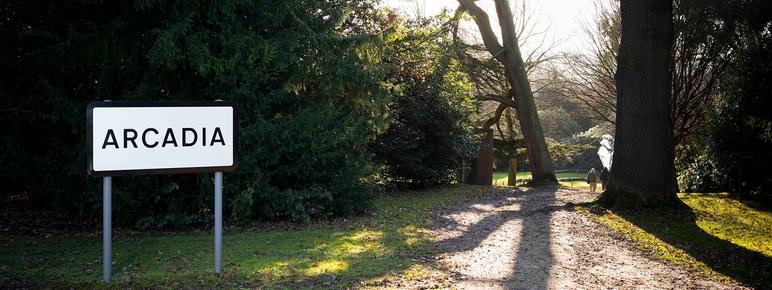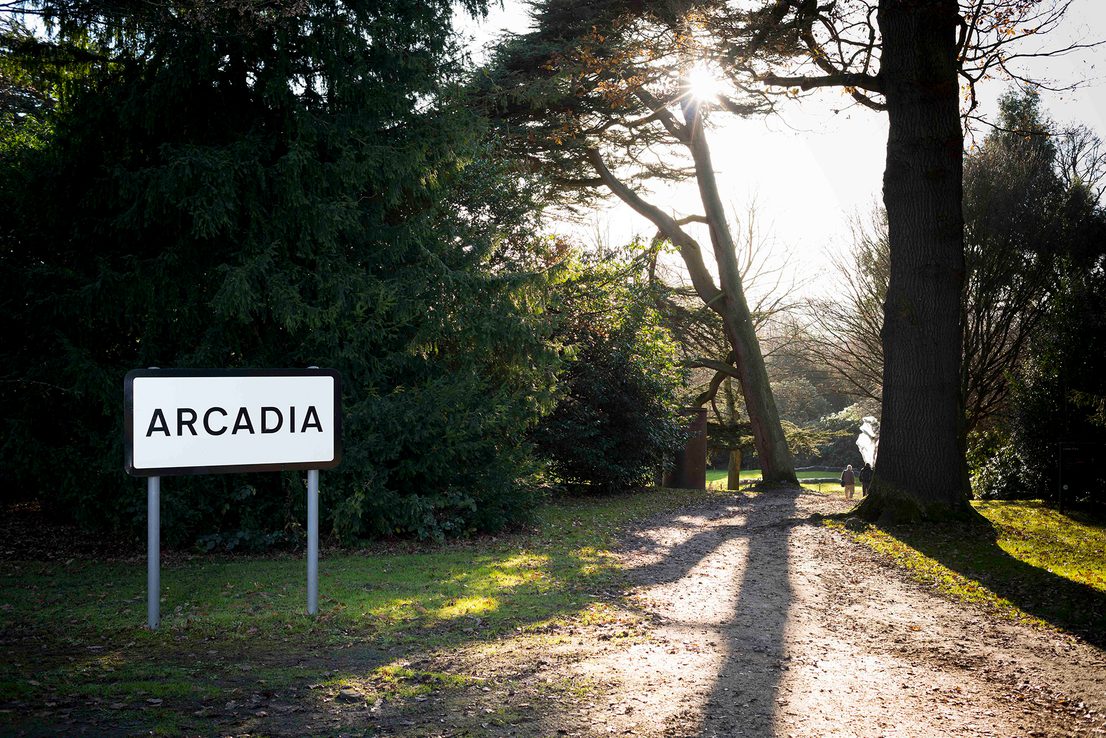
Leo Fitzmaurice: Arcadia
Art Outdoors /Leo Fitzmaurice: Arcadia
Arcadia consists of four signs with different characteristics, in different locations at YSP – ranging from the entry point to the expanses of Lower Park.
Arcadia uses the familiar form and visual style of road signs, but rather than giving us factual information and directions, Fitzmaurice’s playful artworks invite us to think of more poetic and abstract ideas. Greeting us on the way in to YSP, is the first sign in motorway blue, with others located further into the Park in heritage brown and village white. Each sign is at odds with its location and normal function, encouraging us to question its purpose.
Arcadia is an imagined natural and harmonious environment, a utopian vision that was a popular subject in mythology as well as in the history of art and literature. Named after a region in Greece, it became a by-word for a simple, unspoiled and perfect place. Fitzmaurice is commenting on the Park’s beautiful landscape that it is seen as an escape from everyday life and a special place to so many people. He also alludes to the fact that much of the Bretton Estate as it appears today was created in the 18th century, almost like an artwork itself.

You might also like
- Art Outdoors

Grenville Davey: Well
- Art Outdoors

Jonathan Borofsky: Molecule Man 1+1+1
- Art Outdoors

Ursula von Rydingsvard: Damski Czepek
Damski Czepek translates as ‘lady’s bonnet’, and has a central hood-like form, with snaking ribbons extending out into the landscape. The shape welcomes you in and envelopes you, and echoes some of the eighteenth-century follies across the estate, such as the Shell Grotto. - Art Outdoors

James Turrell: Deer Shelter Skyspace
The Deer Shelter Skyspace creates a place of contemplation and revelation, harnessing the changing light of the Yorkshire sky. It allows us to take time to sit, to think, and to contemplate; an open invitation to access a peacefulness that is often denied in our busy lives that abound with technology and speed.